According to an AP article, House and Senate spending bills would drastically reduce Environmental Protection Agency dollars for a law designed to boost ethanol use.
The article reports that of the $11.4 million requested by President Bush to implement the Renewable Fuels Standard in last year’s energy bill, the House has approved only $2.4 million and the Senate only $1.4 million.
“It’s as if they haven’t read their own press releases about the need to promote alternatives to gasoline,” said Frank O’Donnell, president of the Washington advocacy group Clean Air Watch.
House lawmakers did not respond to requests for comment, but a spokesman for Sen. Conrad Burns, the Montana Republican who chairs the Senate subcommittee, said Burns expects the funding to increase in final House-Senate negotiations on the bill.



 Indiana Governor Mitch Daniels joined officials from
Indiana Governor Mitch Daniels joined officials from 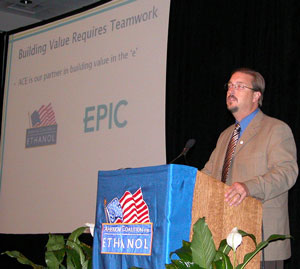 Ethanol Promotion and Information Council Executive Director Tom Slunecka took to the podium at the
Ethanol Promotion and Information Council Executive Director Tom Slunecka took to the podium at the 
 Here we are, Chuck and Cindy, together again for the SECOND week in a row – here at the
Here we are, Chuck and Cindy, together again for the SECOND week in a row – here at the  I just received some very sad news regarding Steve King,
I just received some very sad news regarding Steve King, 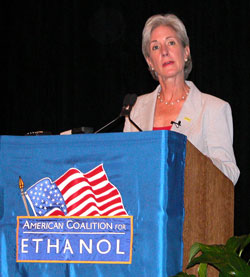 The
The 
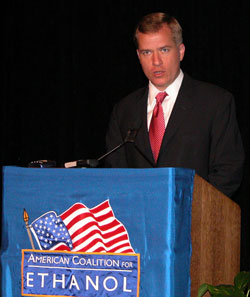 Governor Matt Blunt of Missouri received a long round of applause from the group when he talked about signing the ten percent ethanol standard for Missouri.
Governor Matt Blunt of Missouri received a long round of applause from the group when he talked about signing the ten percent ethanol standard for Missouri. 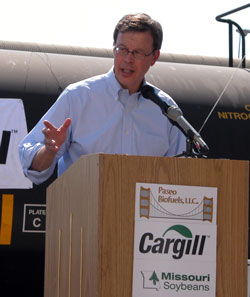 Missouri Senator Jim Talent was on hand today to help promote the Paseo Biofuels/Cargill biodiesel plant announcement in Kansas City. He was certainly the biofuels Senator today.
Missouri Senator Jim Talent was on hand today to help promote the Paseo Biofuels/Cargill biodiesel plant announcement in Kansas City. He was certainly the biofuels Senator today.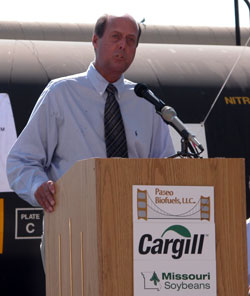 Wayne Teddy is the President of Cargill’s Grain & Oilseed Crush Supply unit for North America. He was on hand this morning at the Paseo Biofuels announcement.
Wayne Teddy is the President of Cargill’s Grain & Oilseed Crush Supply unit for North America. He was on hand this morning at the Paseo Biofuels announcement. Dale Ludwig, Executive Director of the
Dale Ludwig, Executive Director of the